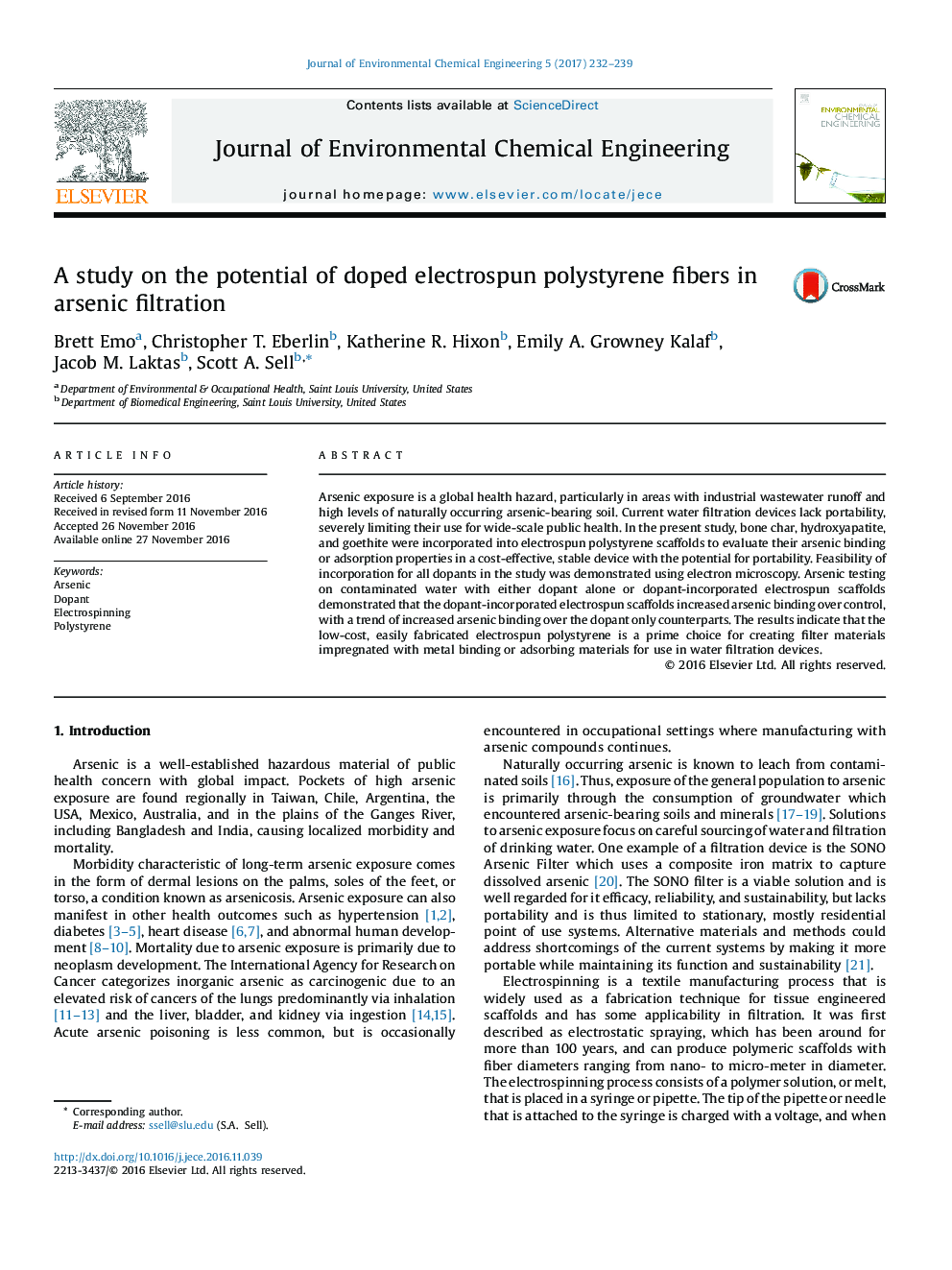| Article ID | Journal | Published Year | Pages | File Type |
|---|---|---|---|---|
| 6477322 | Journal of Environmental Chemical Engineering | 2017 | 8 Pages |
Arsenic exposure is a global health hazard, particularly in areas with industrial wastewater runoff and high levels of naturally occurring arsenic-bearing soil. Current water filtration devices lack portability, severely limiting their use for wide-scale public health. In the present study, bone char, hydroxyapatite, and goethite were incorporated into electrospun polystyrene scaffolds to evaluate their arsenic binding or adsorption properties in a cost-effective, stable device with the potential for portability. Feasibility of incorporation for all dopants in the study was demonstrated using electron microscopy. Arsenic testing on contaminated water with either dopant alone or dopant-incorporated electrospun scaffolds demonstrated that the dopant-incorporated electrospun scaffolds increased arsenic binding over control, with a trend of increased arsenic binding over the dopant only counterparts. The results indicate that the low-cost, easily fabricated electrospun polystyrene is a prime choice for creating filter materials impregnated with metal binding or adsorbing materials for use in water filtration devices.
